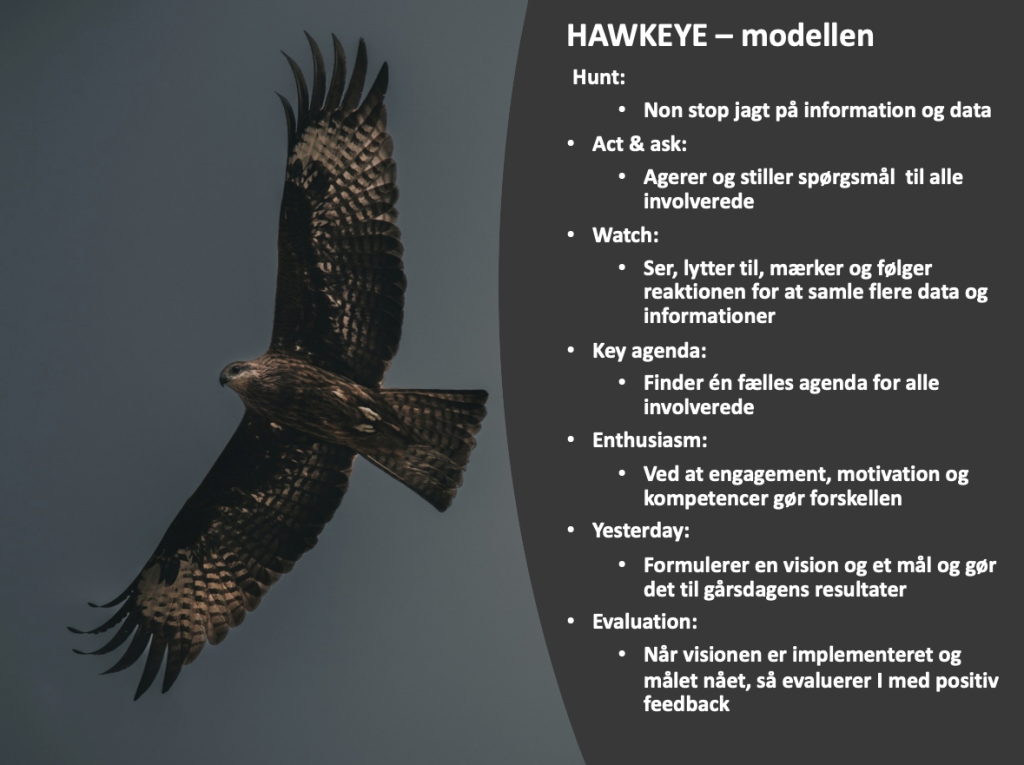
When we talk about leadership, we often overlook and talk little about the unique and important role that middle management plays in our businesses and organisations. We’ve done something about that. We’ve written the book “The Excellent Middle Manager”, which you can find on our website (link). In this article, we write a little about the background and the specific strategy that the outstanding middle managers we’ve met use continuously in their day-to-day management work in the real world.
Introduction
The need for the Outstanding Middle Manager is greater than ever – from uncontrollable financial crises, to restructuring, recruitment, retention and training needs. So who is the middle manager who can bring others along and navigate the chaos of ever-changing demands and needs, and what is the leadership style of the Outstanding Middle Manager? What traits are common among outstanding middle managers in different industries and leadership situations?
In the book “The Outstanding Middle Manager”, we seek answers to these questions, among others. It’s about a strong leadership model for finding, learning and applying the tools that the modern middle manager needs right now as an excellent leader in a chaotic and unpredictable world.
We have chosen to focus on the Middle Manager because we believe that this is the most important level of leadership in a company and organisation. This is where the foundation for the company’s results is created, for better or worse. The middle manager creates the glue between the organisational and management levels. The middle manager is the indispensable backbone of the organisation. In other words, we identify the commonalities in this book and provide a tool for other middle managers to learn what characterises the Excellent Middle Manager and what it takes to adopt this leadership behaviour themselves.
The Excellent Leader book and strategy tells the story of leadership, and it tells a story of good leadership where the Leader talks to the employee, understands the employee’s story, and at the same time is completely honest with the employee. Furthermore, the leader sees the employee as a whole person, not just a piece of the puzzle. The employee is a flesh and blood human being with strengths and weaknesses.
Excellent Middle Managers have individual strategies (individual micro strategies) for HOW they implement the model based on their unique leadership profile and the context of each leadership task, including consideration of the personality profile of the people involved. Different forms of situational leadership. Excellent Middle Managers utilise all elements of their sensory systems in their day-to-day leadership.
The HAWKEYE model is general. The individual concrete leadership stories and leadership experiences from each manager are good and very concrete. The general model shows how to use the leadership model in all situations.
HAWKEYE – The Strategy for the Outstanding Middle Manager
We call the leadership model for the Excellent Middle Manager the HAWKEYE model. HAWKEYE consists of seven elements. The seven elements are implemented as iterative processes, simultaneously or separately, linked to each and every leadership task where relevant.
- HUNT – “Non-stop hunt for information and data”
The good leader is constantly on the hunt for valid information and data for use in their leadership work, both by themselves and others. The good leader must therefore train and develop their senses to capture, filter and send all relevant data and information in a timely manner to the parts of the brain that need it. This applies to both explicit data and tacit knowledge, verbal and non-verbal communication.
- ACT & ASK “Act and ask questions to all involved”
The good leader asks data-generating and new questions when he or she lacks answers or doubts and lacks the decision-making power to make the best possible decisions. The questions are asked to all relevant stakeholders.
- WATCH “Watch, listen often, feel and sense the reaction to gather more data and information”
The good leader observes and integrates all reactions to their leadership behaviour, style and communication.
Steps 1 to 3 (HUNT – ACT/ASK – WATCH) are continued as an iterative process until a common agenda for all involved is found that the leader deems best possible in the situation, taking everything (what is deemed possible) into account.
- KEY AGENDA “Finding a common agenda for all involved”
The good leader formulates the common agenda for the team, department, etc. through the involvement of all stakeholders. Only true involvement creates the necessary co-ownership.
- ENTHUSIASM “Engagement, motivation and competences make the difference”
The great leader knows that employee motivation and competences are key to being able to create and maintain their own, their team’s and the organisation’s performance and best possible core services. Motivational factors are naturally embedded in the good leader’s daily behaviour and are an integral and natural part of daily work processes. The competences of managers and employees are further developed in line with current needs. The chosen competency development, which is agreed between manager and employee, is created from both a management and an employee perspective and in both a short-term and long-term perspective.
- YESTERDAY “Formulate a vision and a goal and turn it into yesterday’s results”
The good leader draws and tells the picture and experience of the shared vision as if it has been achieved, fulfilled and realised. An idea of how the team, department and company are, work and function on the other side of the vision, when the leader and employees together look back on the day when the vision was fully implemented.
- EVALUATION “When the vision is implemented and the goal is achieved, evaluate with positive feedback”
The good leader continuously evaluates their leadership and the organisation’s and employees’ performance with positive and constructive feedback. Both in terms of daily work and longer-term tasks and visions, both short-term and long-term. The good leader’s evaluations lead to new “hunts” for information and the spiral of HAWKEYE begins anew.
We need to move on
So far, our HAWKEYE model is based on three different cases from three very different industries (Banking, Psychiatry and Sports). So we need even more data and input to be able to test and adjust the HAWKEYE model so that over time it reflects reality more and more and adds the nuances that make it more widely applicable.
Therefore, we are also interested in your input and ideas in the further development of the book and the model, which we consider to be dynamic and living products because the world is constantly changing, as are the requirements for the excellent middle manager. That’s why we want to hear from you. Happy reading
